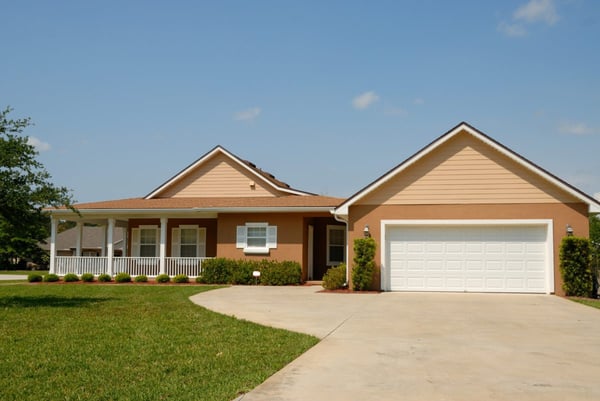When building a home from the ground up, choosing the exterior material is a crucial step. Facades not only serve to protect a home from the elements, they also determine the home’s aesthetic. As an investor, this may be an even more important consideration if you are building a number of homes on a large lot or subdivision. Will you use the same material for every home? Or will you opt for some variety? Here are five of the most common exterior siding materials on the market, with a bit more about each one.
Brick
An extremely common housing material, brick has been used for centuries across the globe and across numerous architectural styles. Because brick is made from fired clay, it is extremely durable and weather resistant. However, since it is a somewhat porous material, most brick these days is installed with a waterproof membrane between the brick facades and the house itself. Brick can be appealing to investors as it is not particularly expensive - about $6-$12 per square foot. However, the installation cost can be high as it is a labor intensive process.
Vinyl
Vinyl is the most common type of residential siding material and there are many reasons for this. Vinyl facades are inexpensive, easy to maintain, easy and fast to install, and comes in many colors. With regards to installation in particular, the ease and speed with which it is installed can help to save you money, particularly if, for example, you are building numerous properties in a subdivision. However, while the technology of vinyl siding production has increased over the last several years making it more durable, and more attractive, it still doesn’t have the longevity of many other materials and can crack and fade over time.
Wood
A beautiful and inexpensive facade material at about $5-$10 a square foot, wood siding can come in a few different shapes and sizes. The most common types are shingles or shakes, which are square or rectangular wooden tiles, or horizontal wooden planks also called clapboard, lap, or bevel. Wooden siding is more susceptible to termites than other materials, but with proper maintenance and occasional staining or painting, can last many decades. For an investor, this material isn’t a bad choice since the low cost, coupled with its high impact curb appeal can make it a very attractive option, helping you stand apart from your competitors.
Stucco
Stucco siding gives a home a smooth, “clean”, sometimes Mediterranean look and an overall cohesiveness. Made from a combination of sand, water, lime, and cement, stucco can last the entire life of the home if properly installed. Like brick, stucco is generally installed with a waterproof membrane between it and the home itself. Stucco is very weatherproof, especially in hot climates and requires little maintenance. When being installed, stucco is usually plastered onto a galvanized steel screen base against the home for added durability.
Fiber Cement
Fiber Cement siding became very popular several decades ago and its popularity - as well as its quality - has continued to grow. One of the reasons fiber cement siding is so popular is because it can be designed to mimic the look of wood siding, stone, brick, or stucco. Another reason it is popular is because it is fireproof, waterproof, and termite proof while being low maintenance.
The many pros of this material make it a great choice for investors as it is a product that satisfies buyers’ needs and can result in a good return on investment. Fiber cement can last between 25-50 years and only costs about $6-$12 per square foot. Lastly, because it is factory-engineered, fiber cement can be made in many different sizes, shapes, and styles, with more customization options than many other types of exterior siding. Its off-site production process also means time is saved on the construction site.
These are some of the most common facades in use today. Choosing the right exterior for your next project will determine which customers are attracted to your build.

Recent Posts
- Spec Home Loans: Complete Guide to Construction Financing for Builders
- Spec Construction Loans: A Spec Line of Credit Is Worth the Paperwork
- Spec Homes and Pre-Sale Homes: Relative Benefits for a Spec Builder
- Spec Construction Success: Insights for the Investor Builder
- How Is a Spec House Different From Other Kinds of House Construction?
